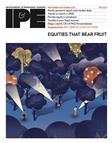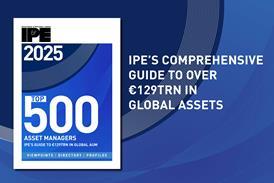The biggest overall risks for pension funds are interest rates and inflation risk, equity risky and mortality risk, according to Gareth Derbyshire, a managing director in the Lehman Brothers' European Pensions Advisory Group. But while interest rate and inflation risk can be hedged using swaps and swaptions, and equity risk can be reduced by cutting back on equities or the use of equity derivatives, mortality risk is harder to tackle.
But with the launch of its LifeMetrics Index, JPMorgan may have moved a step closer to a tradeable market for longevity risk.
The bank created the index as one of the three components of its LifeMetrics platform after realising there are few solutions for dealing with longevity, and the ones available are costly.
Guy Coughlan, managing director and global head of pension asset liability management at JPMorgan, says the index has been well received by pension funds, sponsors, insurers, consultants, actuaries as well as by investors.
So far no pension plan has undertaken a transaction to hedge its longevity risk on the index. "We are engaged in a number of conversations on hedging transactions and expect these to take place within the next year," says Coughlan. "The nature of the pension industry is that petition timescales are long, particularly when confronted with a new product. And we only launched the index on 13 March."
According to Derbyshire, various mortality risk products have been brought into the market over the years but have tended to be of limited use, either due to inefficiency or as implementation would have compromised the rest of the investment strategy.
"Historically, there has been a limited amount that pension funds can do in terms of hedging that mortality risk apart from executing a full buyout, in other words going into the insurance market and discharging the liabilities in that way," Derbyshire says.
The LifeMetrics Index - the only international longevity index according to JPMorgan - is currently available in , and the and will shortly launch in the . This will be followed by another launch - most likely in Europe - before the end of the year. Other countries will follow next year, depending on demand and opportunities. "Broadening it out to other countries is important but this is a new asset class and we also need to continue to educate pension funds on longevity risk and hedging," Cough-lin says.
Philip Menco, CEO at De Eendragt Pensioen, which changed for regulatory reasons from a pension fund to an insurance company in 2006, says pension funds have two options to cover longevity risk. One is that the sponsor has to pay an additional amount to make up for the increase in liabilities caused by longevity every few years when mortality tables are recalculated. The second is to find a way in the market to cover the risk.
"There is a price for taking on the risk. And if the price is higher than the price of another type of spreading the cost, then it becomes less interesting. It is also a matter of politics as it is hard for some pension funds to go back to their sponsors and ask for additional amounts," he says.
Buyouts are not always an option. "The UK Pensions Regulator estimates that buyout liabilities are on average more than 40% higher than accounting liabilities," says Derbyshire. "Most pension funds simply do not have enough assets to meet buyout liabilities and that is why only a small proportion have so far gone down this route."
But while buyouts are costly, Coughlan does not think that longevity hedges will lead to their disappearance. He says: "A company that cannot yet afford a buyout may wish to hedge its longevity over a period to generate investment returns and new contributions in order to move towards that buy-out level. So longevity hedges could facilitate buyouts as well as present an alternative."
JPMorgan compares the index to open source software produced for the industry that helps the development of a longevity hedging market because it raises visibility and serves as a reference for determining the settlement of longevity hedges.
Derbyshire says: "From a risk management point of view it is in many ways the missing link. But most pension funds have yet to look at mortality indices very closely. The real breakthrough will be when new products are launched on the back of the indices, which will enable them to execute mortality hedges."
He points out that mortality indices tend to address the risk of mortality improvements across a broad population. However, he says, what pension funds particularly care about is their own members.








No comments yet